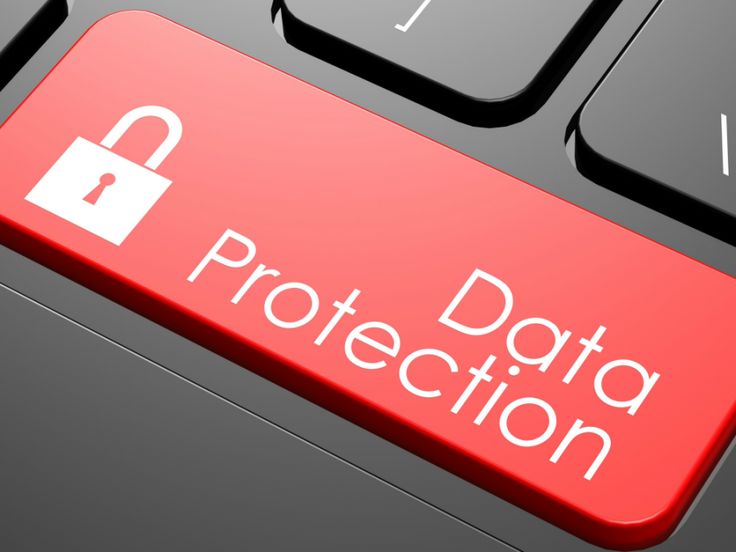In today’s interconnected world, where our lives are increasingly lived online, the concept of cyber safety has moved from a niche technical concern to an absolute imperative for every individual and organization. From personal banking and social interactions to global commerce and critical infrastructure, virtually every facet of modern existence now relies on digital networks. This pervasive online presence, while offering unprecedented convenience and connectivity, also presents a complex and evolving array of threats. Cyber safety, therefore, is the vital practice of understanding, mitigating, and defending against the risks inherent in our digital lives. It’s about building a robust shield around our data, privacy, and online well-being, ensuring a secure and resilient online future for everyone. Protecting online life is no longer an option; it’s a fundamental necessity.
The Evolving Threat Landscape
To effectively practice cyber safety, one must first grasp the nature of the threats. The digital landscape is a dynamic battlefield where malicious actors constantly evolve their tactics, leveraging technological advancements to exploit vulnerabilities.
A. The Rise of Cybercrime: A Lucrative Business
Cybercrime has transformed from isolated acts of vandalism into a sophisticated, highly organized, and immensely profitable industry.
- Financial Motivation: The primary driver for most cybercriminals is financial gain. This can range from direct theft of funds (e.g., through phishing scams, ransomware) to monetizing stolen data (e.g., selling credit card numbers, personal identities on the dark web).
- Organized Crime Syndicates: Many cyberattacks are executed by large, well-funded organized crime groups that operate across borders, utilizing specialized roles (e.g., malware developers, phishers, money mules) and employing sophisticated tactics.
- State-Sponsored Hacking: Nation-states engage in cyber warfare for espionage, intellectual property theft, political disruption, or to target critical infrastructure. These attacks are often highly advanced and persistent (Advanced Persistent Threats – APTs).
- Hacktivism: Groups or individuals use hacking to promote a political or social agenda, often through website defacement, denial-of-service attacks, or data leaks (e.g., Anonymous).
- Insider Threats: Disgruntled employees or individuals with legitimate access can pose significant risks by intentionally or unintentionally compromising data or systems from within an organization.
B. Common Cyber Threats and Attack Vectors
Understanding how these malicious actors operate involves recognizing the most prevalent types of cyber threats.
- Malware (Malicious Software): A broad category of software designed to cause damage, gain unauthorized access, or disrupt operations.
- Viruses: Attach themselves to legitimate programs and spread when the program is executed.
- Worms: Self-replicating malware that spreads across networks without human intervention.
- Trojans: Disguise themselves as legitimate software to trick users into installing them, then provide backdoors for attackers.
- Ransomware: Encrypts a victim’s files, demanding a ransom (usually cryptocurrency) for decryption. Its impact is often devastating, crippling businesses and even public services.
- Spyware: Secretly monitors and collects user information (e.g., Browse history, keystrokes) without their knowledge.
- Adware: Displays unwanted advertisements, often bundled with free software.
- Phishing and Social Engineering: Manipulating people into divulging confidential information or performing actions they wouldn’t normally do.
- Phishing: Deceptive emails, messages, or websites designed to trick recipients into revealing sensitive data (e.g., login credentials, credit card numbers) by impersonating trusted entities.
- Spear Phishing: Highly targeted phishing attacks aimed at specific individuals or organizations, often using personalized information to increase credibility.
- Whaling: Phishing attacks targeting high-profile individuals (e.g., CEOs, executives).
- Vishing (Voice Phishing): Phishing conducted over the phone.
- Smishing (SMS Phishing): Phishing conducted via text messages.
- Denial-of-Service (DoS) and Distributed Denial-of-Service (DDoS) Attacks: Overwhelming a system, server, or network with a flood of traffic, making it unavailable to legitimate users. DDoS attacks use multiple compromised systems to launch the attack.
- Man-in-the-Middle (MitM) Attacks: An attacker intercepts and potentially alters communication between two parties who believe they are communicating directly. Common in unencrypted Wi-Fi networks.
- SQL Injection: Exploiting vulnerabilities in web applications to insert malicious SQL code into input fields, allowing attackers to manipulate or steal data from databases.
- Cross-Site Scripting (XSS): Injecting malicious scripts into trusted websites, which are then executed by unsuspecting users, often used to steal session cookies or credentials.
- Zero-Day Exploits: Exploiting software vulnerabilities that are unknown to the vendor, meaning there is no patch available, making them particularly dangerous.
- Insider Threats: As mentioned, individuals within an organization who misuse their access, either maliciously or unintentionally, leading to data breaches or system compromise.
Foundational Principles of Robust Cyber Safety
Effective cyber safety isn’t just about tools; it’s about adopting a proactive mindset and adhering to fundamental principles that reduce vulnerability and enhance resilience.
A. Strong Authentication Practices
The first line of defense is ensuring only authorized individuals can access accounts and systems.
- Complex Passwords: Using long, unique, and complex passwords (mix of uppercase, lowercase, numbers, symbols) for every account. Avoid easily guessable information.
- Multi-Factor Authentication (MFA): Implementing MFA (also known as 2FA) adds an extra layer of security beyond just a password. This typically involves something you know (password) plus something you have (e.g., a code from an authenticator app, a hardware token, a fingerprint) or something you are (biometrics). This drastically reduces the risk of account compromise even if a password is stolen.
- Password Managers: Using reputable password manager software to generate, store, and auto-fill complex, unique passwords for all accounts. This eliminates the need to remember dozens of different passwords.
B. Software and System Updates
Keeping all software, operating systems, and applications up-to-date is arguably the single most important cybersecurity practice.
- Patching Vulnerabilities: Software vendors regularly release patches to fix security flaws (vulnerabilities) that attackers could exploit. Applying these updates promptly closes these backdoors.
- Automatic Updates: Enable automatic updates for operating systems (Windows, macOS, Linux, iOS, Android) and critical applications whenever possible.
- Firmware Updates: Don’t forget to update firmware for routers, IoT devices, and other hardware, as these can also contain critical security fixes.
C. Data Backup and Recovery
In the event of a cyberattack (especially ransomware) or data loss, a robust backup strategy is the ultimate safety net.
- 3-2-1 Backup Rule: Maintain at least 3 copies of your data, store them on at least 2 different types of media, and keep 1 copy off-site (e.g., in the cloud, on an external hard drive stored elsewhere).
- Regular Backups: Automate and schedule regular backups of critical data.
- Offline/Immutable Backups: For ransomware protection, ensure at least one backup copy is offline or immutable, meaning it cannot be altered or deleted by a live network infection.
- Test Backups: Periodically test your backup recovery process to ensure data integrity and that you can actually restore your information when needed.
D. Network Security Fundamentals
Securing the networks through which our data travels is crucial, both at home and in organizations.
- Firewalls: Use firewalls (hardware or software) to control incoming and outgoing network traffic, blocking unauthorized access. Most operating systems have built-in firewalls.
- Secure Wi-Fi:
- Strong Encryption: Use WPA2 or WPA3 encryption for your home Wi-Fi network. Avoid outdated WEP.
- Strong Admin Password: Change the default administrator password on your router.
- Guest Network: Set up a separate guest Wi-Fi network for visitors to isolate their devices from your main network.
- Disable WPS: Disable Wi-Fi Protected Setup (WPS) on your router if you don’t use it, as it can be vulnerable.
- VPN (Virtual Private Network): Use a reputable VPN service when connecting to public Wi-Fi networks to encrypt your internet traffic and protect your privacy.
E. Educate and Awareness Training
The human element is often the weakest link in cybersecurity. Continuous education and awareness are vital.
- Phishing Awareness: Train individuals to recognize phishing attempts by scrutinizing sender addresses, suspicious links, grammatical errors, and urgent demands.
- Social Engineering Tactics: Educate about common social engineering techniques used by attackers to manipulate individuals.
- Safe Browse Habits: Teach practices like avoiding suspicious links, downloading software only from trusted sources, and being cautious about pop-ups and unsolicited messages.
- Privacy Settings: Encourage regular review and configuration of privacy settings on social media, apps, and online services.
- Incident Reporting: Establish clear procedures for reporting suspicious activities or potential security incidents.
Protecting Personal Digital Life: A Practical Guide
For individuals, cyber safety involves practical steps to safeguard personal information, finances, and privacy in an increasingly online existence.
A. Secure Your Devices (Computers, Phones, Tablets)
Your devices are gateways to your digital life. Secure them diligently.
- Strong Passwords/PINs/Biometrics: Enable strong authentication methods (passwords, PINs, fingerprints, facial recognition) for unlocking your devices.
- Encrypt Your Devices: Enable full-disk encryption (e.g., BitLocker for Windows, FileVault for macOS, built-in encryption for modern Android/iOS devices). This protects your data if your device is lost or stolen.
- Antivirus/Anti-Malware Software: Install and keep updated reputable antivirus/anti-malware software on your computers. While not foolproof, they provide a crucial layer of defense against known threats.
- Regular Software Updates: As mentioned, enable automatic updates for your operating system and all applications.
- Be Cautious with Apps: Download apps only from official app stores (Google Play, Apple App Store) and review app permissions carefully before installing. Limit permissions that seem excessive.
B. Safeguard Your Online Accounts
Every online account is a potential entry point for attackers.
- Unique, Strong Passwords & MFA: Use a unique, strong password and enable MFA for every single online account, especially for email, banking, social media, and e-commerce sites. This is paramount.
- Email as the Master Key: Your primary email account often serves as the recovery method for many other accounts. Secure it with the strongest possible password and MFA.
- Review Privacy Settings: Regularly check and adjust privacy settings on social media platforms, online services, and apps to control what information is shared publicly.
- Beware of Public Wi-Fi: Avoid conducting sensitive transactions (banking, shopping) on unsecured public Wi-Fi networks. Use a VPN if you must.
- Recognize Phishing: Always be suspicious of unsolicited emails, texts, or calls asking for personal information or directing you to suspicious links. Verify the sender’s identity through official channels.
C. Smart Browse and Internet Habits
Your Browse habits significantly impact your online safety.
- Use Reputable Browsers: Keep your web browser (Chrome, Firefox, Edge, Safari) updated to the latest version.
- HTTPS Everywhere: Always look for “HTTPS” in the website address bar and a padlock icon. This indicates an encrypted connection. Avoid websites that only use HTTP for sensitive transactions.
- Ad Blockers and Pop-up Blockers: Use browser extensions to block intrusive ads and pop-ups, which can sometimes harbor malicious content.
- Think Before You Click: Be extremely cautious about clicking on suspicious links in emails, text messages, or unfamiliar websites. Hover over links to see the actual URL before clicking.
- Download from Official Sources: Only download software, apps, or files from official, trusted websites and app stores. Avoid third-party download sites.
D. Managing Your Digital Footprint
Every interaction leaves a trail. Be mindful of your digital footprint.
- Privacy Settings: Regularly review and tighten privacy settings on all online platforms.
- Information Sharing: Be judicious about what personal information you share online, especially on social media. Avoid oversharing personal details (e.g., vacation plans, home address).
- Data Deletion/Minimization: Delete old, unnecessary accounts or data. Many services allow you to request data deletion.
- Public Records & Background Checks: Be aware that some information about you might be publicly available through various online databases. Review what appears about you online.
Organizational Cyber Safety: Building Resilient Defenses
For businesses and institutions, cyber safety scales up dramatically, requiring comprehensive strategies, robust technologies, and a strong security culture.
A. Comprehensive Risk Management Framework
Organizations must adopt a structured approach to identifying, assessing, and mitigating cyber risks.
- Risk Assessment: Regularly identify and evaluate potential cyber threats, vulnerabilities, and their potential impact on critical assets (data, systems, services).
- Security Policies and Procedures: Establish clear, enforceable security policies (e.g., acceptable use, data handling, incident response) and documented procedures for all employees.
- Compliance and Regulatory Adherence: Ensure all cybersecurity practices comply with relevant industry regulations (e.g., GDPR, HIPAA, PCI DSS, NIST Framework) and legal mandates.
- Regular Audits and Reviews: Conduct internal and external security audits, penetration testing, and vulnerability assessments to identify weaknesses proactively.
B. Robust Technical Defenses
Implementing a multi-layered defense-in-depth strategy is crucial for organizational cyber safety.
- Network Security:
- Next-Generation Firewalls (NGFW): Advanced firewalls with deep packet inspection, intrusion prevention systems (IPS), and application control.
- Intrusion Detection/Prevention Systems (IDS/IPS): Monitor network traffic for suspicious activity and block known attacks.
- Secure Network Segmentation: Isolate different parts of the network (e.g., production, development, IoT devices, guest Wi-Fi) to limit the lateral movement of attackers.
- VPNs for Remote Access: Secure remote access for employees using corporate VPNs with strong encryption and MFA.
- Endpoint Security:
- Advanced Endpoint Detection and Response (EDR): Monitor endpoints (desktops, laptops, servers) for malicious activity, detect threats, and enable rapid response.
- Device Encryption: Enforce full-disk encryption on all corporate laptops and mobile devices.
- Patch Management System: Automate the timely application of security patches across all operating systems and applications within the organization.
- Data Security:
- Data Loss Prevention (DLP): Tools to prevent sensitive data from leaving the organization’s control (e.g., blocking unauthorized email attachments, USB drives).
- Encryption: Encrypt sensitive data at rest (on servers, databases, cloud storage) and in transit (using TLS/SSL for communications).
- Access Control: Implement the principle of least privilege, ensuring employees only have access to the data and systems absolutely necessary for their job functions.
- Application Security:
- Secure Development Lifecycle (SDL): Integrate security considerations into every phase of the software development process, from design to testing and deployment.
- Web Application Firewalls (WAF): Protect web applications from common web-based attacks (e.g., SQL injection, XSS).
- Regular Security Testing: Conduct vulnerability scanning, penetration testing, and code reviews for all applications.
- Cloud Security:
- Cloud Security Posture Management (CSPM): Tools to monitor and enforce security configurations in cloud environments.
- Cloud Access Security Brokers (CASB): Enforce security policies for cloud applications and services.
- Shared Responsibility Model: Understand the cloud provider’s security responsibilities versus your own in the cloud.
C. Incident Response and Business Continuity Planning
Despite best efforts, breaches can occur. Organizations need robust plans to respond.
- Incident Response Plan (IRP): A detailed, pre-defined plan outlining steps to detect, contain, eradicate, recover from, and conduct post-incident analysis of cyberattacks.
- Business Continuity Plan (BCP): Ensures critical business functions can continue during and after a cyberattack or disaster.
- Disaster Recovery Plan (DRP): Focuses on restoring IT systems and data after a significant disruption.
- Tabletop Exercises: Regularly conduct simulated cyberattack exercises (tabletop exercises) to test the effectiveness of IRP, BCP, and DRP, and identify areas for improvement.
- Communication Strategy: Develop a clear communication plan for notifying stakeholders (employees, customers, regulators, media) in the event of a breach.
D. Security Awareness Training and Culture
The human firewall is paramount. A strong security culture is built on continuous education.
- Mandatory Training: Implement mandatory and regular security awareness training for all employees, covering phishing, social engineering, password hygiene, and data handling.
- Simulated Phishing Attacks: Regularly conduct simulated phishing attacks to test employee vigilance and provide real-time education.
- Security Champions: Designate security champions within different departments to promote best practices and act as a resource for colleagues.
- Top-Down Commitment: Security must be a priority from executive leadership down, fostering a culture where every employee understands their role in protecting the organization.
Emerging Trends and the Future of Cyber Safety
The landscape of cyber threats is constantly evolving, driven by technological advancements and geopolitical shifts. The future of cyber safety will be shaped by these emerging trends.
A. AI vs. AI: The Arms Race in Cybersecurity
Artificial Intelligence (AI) is a double-edged sword in cybersecurity.
- AI for Defense: AI and Machine Learning (ML) are increasingly used in defensive tools for:
- Threat Detection: Identifying novel malware, abnormal network behavior, and sophisticated phishing attempts faster than human analysts.
- Automated Response: Orchestrating automated responses to incidents, such as isolating infected systems or blocking malicious IPs.
- Vulnerability Prediction: Analyzing codebases and system configurations to predict potential vulnerabilities before they are exploited.
- AI for Attack: Adversaries are also leveraging AI for:
- Sophisticated Phishing: Generating highly personalized and convincing phishing emails (spear phishing at scale).
- Polymorphic Malware: Creating malware that constantly changes its code to evade detection.
- Automated Exploitation: AI-powered tools that autonomously scan for and exploit vulnerabilities. This creates an “AI vs. AI” arms race, where defensive AI must continuously evolve to counter offensive AI.
B. Zero Trust Architecture (ZTA)
The traditional “castle-and-moat” security model (secure perimeter, trust everything inside) is failing. Zero Trust Architecture (ZTA) is gaining widespread adoption.
- Never Trust, Always Verify: ZTA operates on the principle that no user, device, or application, whether inside or outside the network, should be trusted by default. Every access request must be authenticated and authorized, even for internal traffic.
- Micro-segmentation: Network perimeters are broken down into small, isolated segments, limiting lateral movement for attackers.
- Context-Aware Access: Access decisions are made based on multiple factors, including user identity, device health, location, and the nature of the resource being accessed. ZTA is a fundamental shift in how security is approached, essential for cloud-native and distributed environments.
C. Quantum Computing and Post-Quantum Cryptography
The advent of powerful quantum computers poses a significant long-term threat to current cryptographic standards.
- Threat to Current Encryption: Quantum algorithms (e.g., Shor’s algorithm) could potentially break widely used public-key encryption standards (e.g., RSA, ECC) that secure internet communications and data.
- Post-Quantum Cryptography (PQC): Research and development in PQC focuses on creating new cryptographic algorithms that are resistant to attacks from quantum computers. The transition to PQC will be a massive undertaking for governments and industries.
- Quantum Key Distribution (QKD): While still in early stages, QKD offers theoretically unbreakable key exchange based on quantum mechanics, but is limited by distance and infrastructure.
D. Supply Chain Security
Recent high-profile attacks have highlighted supply chain vulnerabilities.
- Software Supply Chain Attacks: Malicious code injected into legitimate software updates or open-source libraries, affecting all users of that software.
- Hardware Supply Chain Attacks: Tampering with hardware components during manufacturing or transit.
- Increased Scrutiny: Organizations are increasing scrutiny of their third-party vendors, suppliers, and software components to mitigate these risks. This includes due diligence, security audits, and contractual obligations for security.
E. Identity-Centric Security
With perimeters dissolving due to cloud and remote work, identity becomes the new security perimeter.
- Identity and Access Management (IAM): More sophisticated IAM solutions, leveraging biometrics, behavioral analytics, and AI, to provide strong, adaptive authentication.
- Decentralized Identity: Technologies like blockchain are exploring decentralized identity solutions, giving individuals more control over their personal data and digital identities.
- Continuous Authentication: Moving beyond one-time authentication to continuous verification of user identity based on behavior and context.
F. Cyber Resilience vs. Pure Prevention
The focus is shifting from solely preventing attacks to building cyber resilience – the ability to anticipate, withstand, recover from, and adapt to adverse cyber conditions.
- Assume Breach: Operate under the assumption that a breach is inevitable, and design systems and processes to detect and respond rapidly.
- Recovery Speed: Prioritize rapid recovery capabilities (e.g., immutable backups, automated system rebuilds) to minimize downtime and business impact.
- Adaptation: Continuously learn from incidents and adapt defenses to future threats.
Conclusion
In an era where our lives are inextricably woven into the fabric of the internet, cyber safety is no longer a luxury but a fundamental necessity for protecting our online life. The digital world, while offering unparalleled opportunities for connection and innovation, is also a constantly evolving battlefield where sophisticated cyber threats pose significant risks to our data, privacy, and well-being. From financially motivated cybercriminals and state-sponsored espionage to pervasive malware and cunning social engineering tactics, the adversaries are relentless.
Effective cyber safety demands a multi-faceted approach, built upon strong authentication, diligent software updates, robust data backups, and secure network practices. For individuals, this translates to vigilant personal habits and device security. For organizations, it requires comprehensive risk management frameworks, layered technical defenses, meticulous incident response planning, and, critically, a pervasive culture of security awareness across all employees.
Looking ahead, the landscape of cyber safety will be shaped by the intensifying AI vs. AI arms race, the widespread adoption of Zero Trust architectures, the complex transition to post-quantum cryptography, and a heightened focus on securing increasingly vulnerable supply chains. The future of cyber safety is not just about preventing attacks but about building inherent resilience – the capacity to anticipate, withstand, recover from, and adapt to cyber threats. By embracing these principles and adapting to emerging challenges, we can collectively build a more secure, private, and trustworthy digital future, ensuring our online life remains protected and prosperous.














